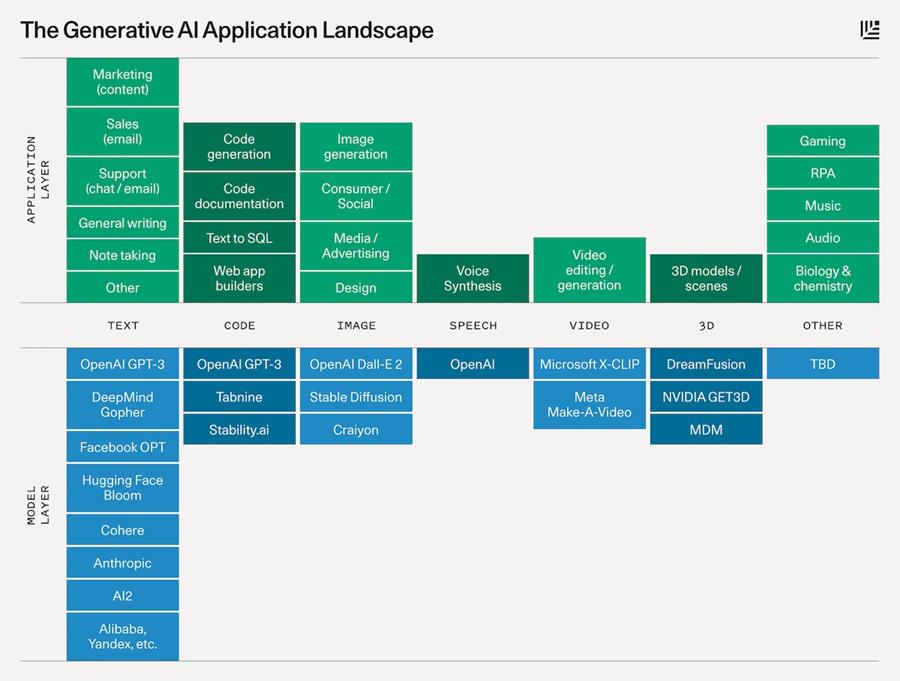
Researchers have been making strides in artificial intelligence (AI) for decades. So many might be wondering why ChatGPT has captured so much attention and whether it’s a momentary fad or truly noteworthy.
I think it’s noteworthy. Here’s why.
AI is integrated into technology used by giants like Google, Microsoft, Apple, and Meta. Swipe up on TikTok, scroll through your Instagram feed, see recommendations on Netflix, run A/B testing for your ads, or find new audiences for your marketing campaigns; those are all examples of advances made in understanding text (natural language processing) and images (computer vision).
But ChatGPT, developed by research company OpenAI, is a game changer.
ChatGPT is the most advanced AI chatbot the public has ever seen. Let’s unpack that.
a) Most advanced: ChatGPT is built on OpenAI’s technology GPT-3 (Generative Pre-trained Transformer 3), which is the the largest language processing AI model to date, with 175 billion parameters. To put that into perspective, the largest model prior to GPT-3 was Microsoft’s Turing NLG model, with 10 billion parameters. The internet-scale quantity of data means that GPT-3 is by far superior in terms of generating seemingly human text. It can take a short prompt, in human speak, and churn out a substantial amount of text, computer code, or spectacular art. And, GPT-4 has just launched.
b) Open to the public: OpenAI has a diverse portfolio of applications. The release last year of ChatGPT and DALL-E 2, OpenAI’s image generator, marked the first mass-market deployment of AI. This is the first time the public, not academic or tech researchers, has direct access to these tools. And ChatGPT has had record-breaking user adoption: 100 million monthly active users in January, just two months after launch. In comparison it took TikTok 9 months and Instagram 2-1/2 years to reach the same level.
c) Plus, OpenAI’s API allows other companies to build off the underlying GPT-3 technology. There’s an explosion of new tools on the market for content, image, and code generation (which we’ll look at below because these tools are already changing the marketing landscape).
And this is why everyone is going bonkers.
ChatGPT and DALL-E 2 mark the first time many of us can play with these tools by providing natural language prompts (normal, human speak vs. code) and enjoying the resulting art, poetry, articles, code, and other outputs.
Whether this leads you to unbridled enthusiasm or existential dread, I want to give you a non-techie explanation of AI so you can better understand the conversation happening about these tools.
First up, the flurry of AI conversation is really about “generative AI”, which is a broad label to describe any type of artificial intelligence that creates new text, images, video, audio, code or data.
How does generative AI work?
Large language models like GPT-3 learn from huge volumes of data. Once trained, they can generate new data that is similar—but not the same as—the training data. Humans then tutor (or tweak) these systems to refine the responses and improve the balance of accuracy and creativity. Because the algorithms are designed to process and generate text on neural networks (to think the way humans think), they can understand human conversation and conversational patterns. They can learn the values and concepts behind words and phrases. This is what freaks people out, but AI is not sentient. It’s using probabilities to predict the best answer given the user prompt and its training data (experience).
When it comes to image generation, AI tools like DALL-E 2 (“Dolly 2” like the cloned sheep or “Dalí too” as in Salvador) and Stable Diffusion use large data sets of image-text pairs that are gathered and organized to train the AI on the connections between the visual structure and how it relates to the accompanying text. So the AI learns, through repetitions like a child, this is a chair, that is a plane.
The next step in text-to-image generation is called diffusion.
Now diffusion models work by incrementally destroying the training data by adding Gaussian noise to the images. The AI is trained on each iteration so it can then learn to recover the data by reversing that noise. Very cool, right?

Credit: CVPR 2022 tutorial
After training, the AI can then use the diffusion model to generate data from noise. Basically, mathematical theory can create works of art.
Think of it like an old-school tv with an antenna. Adjust the antenna to turn static into a signal.
In text-to-image AI, the signal is a user text prompt or an uploaded image.

Don’t be fooled by the simplicity of the above example. These tools are capable of creating photorealistic images, branded creative, or any other form of visual art you can imagine. It’s enabling artists to create multiple works within seconds.
Look at the art of Jonas Peterson. It’s stunning. His first series of AI-generated prints sold out within hours at $1500 USD per piece. These are not photos, these are not real people. This is art generated from very creative prompts.
Again, AI is not sentient.
Generative AI is a probability machine. It’s taking user prompts, and with mathematics, returning a reasonably certain outcome in the form of chat text, images, code, or whatever has been asked for by the user.
AI is only as good as the data it was trained on, and it’s only as good as the prompts it receives. If it’s been trained on mislabeled images then you might get cars instead of planes. If you write an ineffective prompt, then you get a lame response.
So when naysayers point out hilariously bad examples, they are misunderstanding the vast impact AI has already and how advanced this technology has become in a relatively short period of time.
Will Generative AI take your job?
No. Although someone using AI might.
Consider the market researcher who can use AI to collect and process data, to test a hypothesis faster. Or the analyst who can take their insights and ask Tome to create a presentation for the client.
If you’re in marketing, you are likely using campaign optimization tools and personalized ad targeting. It’s not a stretch to add AI content generation tools like Jasper to your mix or to prompt ChatGPT to provide options for ad headlines and to write alt text for website images.
Are all the outcomes ready for prime time? No. But they are a great starting point.
Think of resources you need like translation or transcription, closed captioning, indexing. Yes, human oversight is needed but AI can be a time and budget saver. Check out this AI transcription tool: OpenAI’s Whisper.
Github copilot and OpenAI’s Codex turn natural language prompts into coding suggestions. Is it perfect code? No. But a lot of times it works.
DALL-E 2 and Stable Diffusion are capable of generating incredible images. This technology is getting better and better at created branded images that are totally viable for social media posts and blog articles.
Videos creation is in the early days of this technology but there are models already that create very good 1st drafts.
These tools are only going to get better.
The generative AI application landscape is exploding.
Sequoia Capital has a fantastic post with a look at the existing tools and, more important, what model layer the tools are using.
You can see the models a bit better in the below image.

Why care about the model layer? Well, because anyone can build a tool off these machine learning models. They are basically better functioning interfaces that use an API key to access the machine learning model.
Here are some examples of how to build chatbots using OpenAI’s GPT-3.
We are moving well outside my technical comfort zone now, but I can foresee companies deciding to build out their own tools. And I can definitely see the value of emerging roles like Prompt Engineer.
A prompt engineer is someone who crafts the prompts needed to elicit optimal responses from AI.
Need a glossary of other terms?
API (application programming interface): A set of protocols and tools that allow software systems to communicate with each other and access data or functionality.
Machine learning: A subfield of artificial intelligence, which is broadly defined as the capability of a machine to imitate human learning through the use of large data sets that train the computer model to explain what happened (descriptive), predict what will happen (predictive) or make suggestions about what action to take (prescriptive). Machine learning is behind chatbots and predictive text, Netflix suggestions, autonomous vehicles. It learns and improves over time.
Model: A mathematical representation of a system, process, or phenomenon that can be used to make predictions or analyze data. In AI, models are often created using machine learning algorithms.
Natural Language Processing: A field of computer science and artificial intelligence concerned with making it possible for computers to process and understand human language.
Holy smokes, Batman! Where to start?
New to AI: Ian Cleary has posted 17 practical uses of Chat GPT for marketing. Read these for inspiration on how how you might add these tools to your workflow.
Ready to Advance: Understand how to write great Chat GPT prompts for business. Download the free 82-page ebook of DALL-E 2 prompts for image creation.
Going Next Level: SEO Consultant Danny Richman has some amazing AI for marketing examples on his blog. One impressive example is his GPT-3 + HARO Journo Response Generator, which is a tool that uses GPT-3 to identify and respond to press requests from journalists looking for sources for a story. Most of his examples use google sheets, APIs and scripts.
Further Reading & Resources
https://www.antler.co/blog/generative-a
https://www.assemblyai.com/blog/diffusion-models-for-machine-learning-introduction/
https://blogs.nvidia.com/blog/2023/01/26/what-are-large-language-models-used-for
https://www.techtarget.com/searchenterpriseai/definition/GPT-


